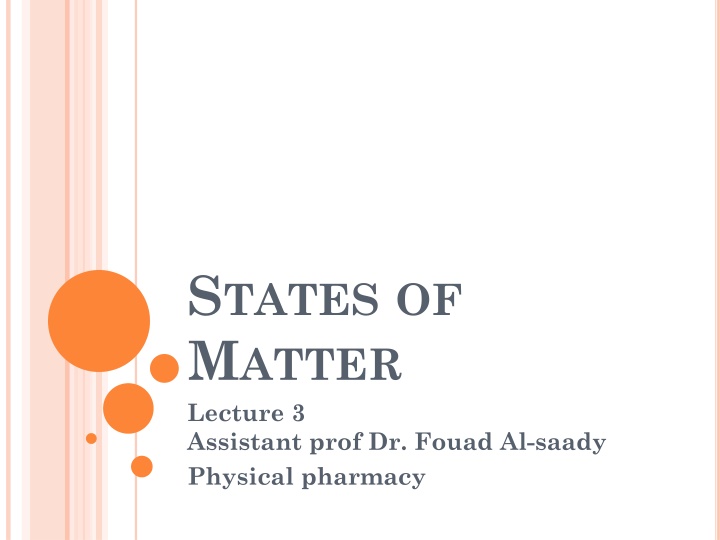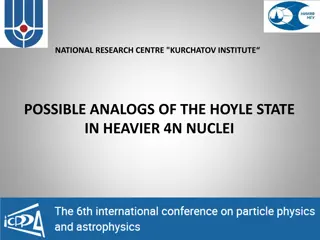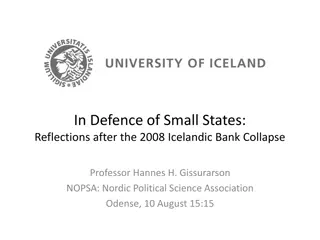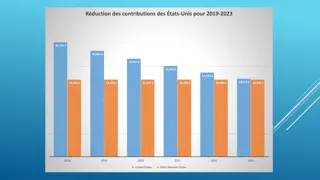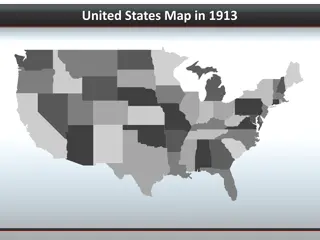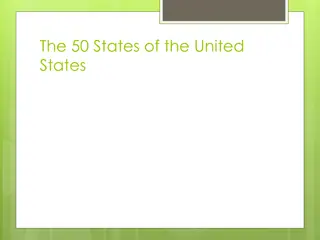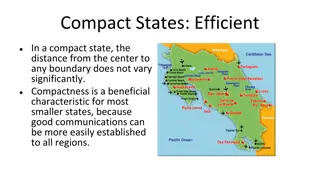STATES OF
The process by which a liquid turns into a gas, exerting vapor pressure on the liquid's surface. This equilibrium vapor pressure depends on temperature and the chemical nature of the liquid, impacting its boiling point. Learn more about these concepts in physical pharmacy.
Download Presentation

Please find below an Image/Link to download the presentation.
The content on the website is provided AS IS for your information and personal use only. It may not be sold, licensed, or shared on other websites without obtaining consent from the author.If you encounter any issues during the download, it is possible that the publisher has removed the file from their server.
You are allowed to download the files provided on this website for personal or commercial use, subject to the condition that they are used lawfully. All files are the property of their respective owners.
The content on the website is provided AS IS for your information and personal use only. It may not be sold, licensed, or shared on other websites without obtaining consent from the author.
E N D
Presentation Transcript
STATES OF MATTER Lecture 3 Assistant prof Dr. Fouad Al-saady Physical pharmacy
VAPOR PRESSURE OF LIQUIDS Evaporation is the name of the process by which a liquid becomes a gas. Evaporation takes place from the surface of the liquid . If we place a liquid in a sealed container with some empty space above the liquid initially there will be no vapor or gas above that liquid. The molecules on the surface of the liquid with sufficient energy will leave the liquid and enter the gas phase ( forming a vapor above the liquid)
This vapor exert a pressure on the surface of the liquid ,i.e., the vapor pressure . And some molecules will return to the liquid state or condense. When the rate of condensation equal the rate of evaporization we say the system at equilibrium. The equilibrium vapor pressure is the vapor pressure measured when a dynamic equilibrium between condensation and evaporation.
Compute the vapor pressure of water at 120 C. the vapor pressure at 100 C is 1 atm , may be taken as 9720 cal/mole for this temp . 1= 9720 ( 393 373) 2.303 1.978 393 373 P2= 1.95 atm Log ?2
The vapor pressure of a increases with temperature because more molecules approach the velocity escape and pass into the gaseous state. necessary for The vapor pressure of a liquid depends upon the chemical nature of the liquid. Those molecules intermolecular attractive lower vapor pressures that have forces strong have
BOILING POINT If a liquid is placed in open container and heated until the vapor pressure equals the atmospheric pressure , the vapor bubbles that rise rapidly through the escape into state . will form liquid the and gaseous
The temperature at which the vapor pressure of a liquid equals the external pressure or the atmospheric pressure is called the boiling point. All the absorbed heat is used to change the liquid to vapor temperature does not rise until the liquid is completely vaporized. The atmospheric pressure at sea level is approximately 760 mmHg . At higher elevations , the atmospheric pressure decrease and the boiling point is lowered. , and the
FACTORS THAT AFFECT THE BOILING POINT Atmospheric pressure : the boiling point of a liquid increases with the increase of atmospheric pressure Intermolecular forces : London dispersion forces < dipole dipole < Hydrogen bonding . The stronger the attractive forces , the higher the boiling point. Number of sites for intermolecular interactions ( surface area) Larger surface area means more sites for interactions causing increase Boiling point . 1. 2.
3. Molecular molecular weight linear molecules have higher boiling point . 4. Boiling point of alcohol is higher than hydrocarbons of the weight because the bonding. 5. Boiling point of carboxylic acid is high because the presence forming dimers . shape : with the same same presence molecular of H of H bonding
SOLIDS AND THE CRYSTALLINE STATE Crystalline Solids The structural units of crystalline solids, such as ice, sodium chloride, and menthol, are arranged in fixed geometric patterns or lattices Crystalline solids, unlike liquids and gases, have definite shapes and an orderly arrangement of units. Gases are easily compressed, whereas solids, like liquids, are practically incompressible. Crystalline solids show definite melting points, passing rather sharply from the solid to the liquid .
The crystal lattice of sodium chloride NaCl Cl Na
CRYSTALFORMS The various crystal forms are divide to basic 7 unit according to its symmetry NaCl urea iodoform iodine Be3Al2(SiO3)6 sucrose Boric acid
TYPESOF CRYSTALS Ionic Crystals Lattice points occupied by cations and anions Held together by electrostatic attraction Hard, brittle, high melting point Poor conductor of heat and electricity CsCl ZnS CaF2
Covalent Crystals Lattice points occupied by atoms Held together by covalent bonds Hard, high melting point Poor conductor of heat and electricity carbon atoms diamond graphite
Metallic Crystals Lattice points occupied by metal atoms Held together by metallic bonds Soft to hard, low to high melting point Good conductors of heat and electricity CU and alloy nucleus & inner shell e- mobile sea of e- Cross Section of a Metallic Crystal
MOLECULAR Lattice occupied by molecules Held by vander waal forces, hydrogen bonding Dry ice Soft, low MP , poor conductor
POLYMORPHISM Some elemental substance such as C and S ,may exist in more than one crystalline form and are said to be allotropic, which is a special case of polymorphism Polymorphism is the ability of a substance to exist in more than one crystal structure
Polymorphs have different stabilities and may spontaneously convert from metastable to stable form . They exhibit different melting points, x- ray diffraction and solubilities even though they are identical chemically. Theobroma oil, or cacao butter, is a olymorphous natural fat. Theobroma oil is capable of existing in four polymorphic forms: the unstable gamma form, melting at 18 C; the alpha form, melting at 22 C; the beta prime form, melting at 28 C; and the stable beta form, melting at 34.5 C.
AMORPHOUS SOLID AMORPHOUS SOLIDS Solids that don t have a definite geometrical shape are known as Amorphous Solids. 1. In these solids particles are randomly arranged in three dimension. 2. They don t have sharp melting points. 3. Amorphous solids are formed due to sudden cooling of liquid. 4. Amorphous solids melt over a wide range of temperature
